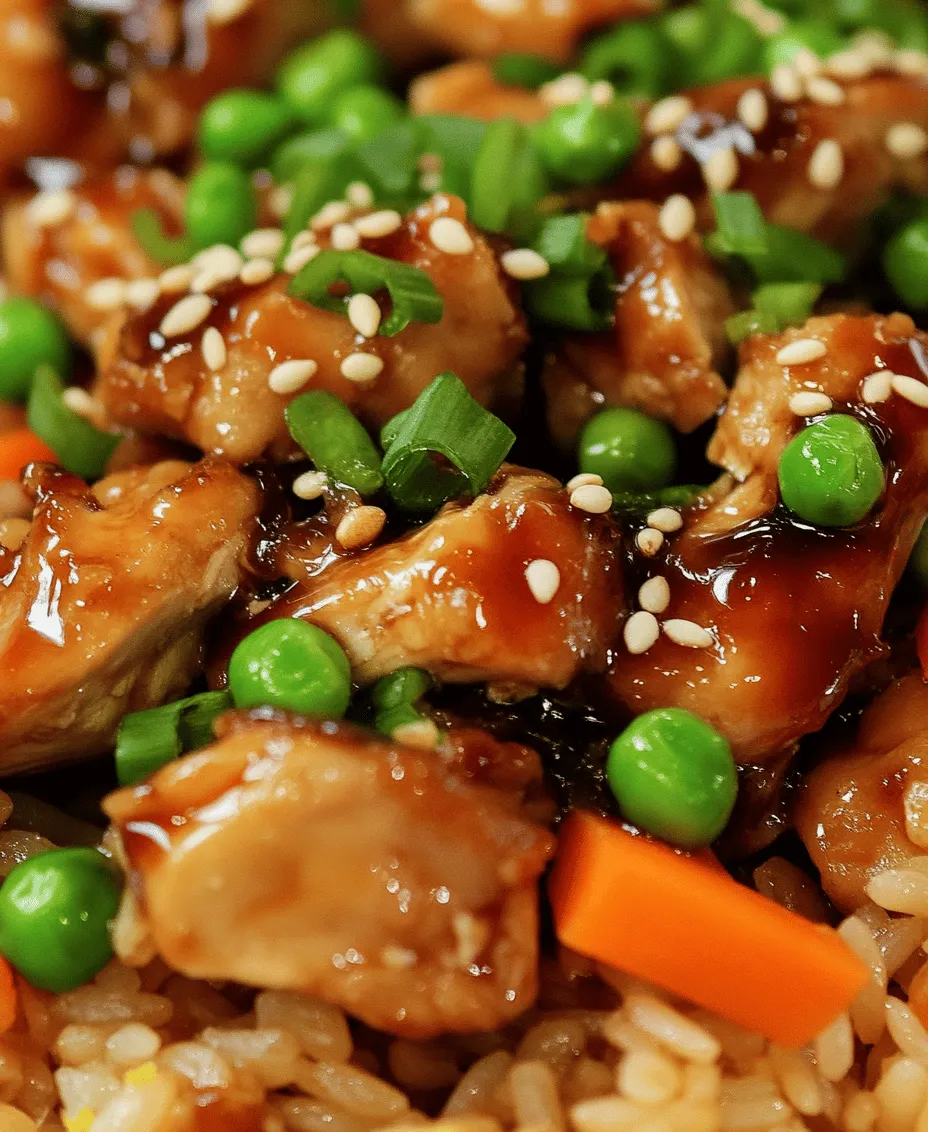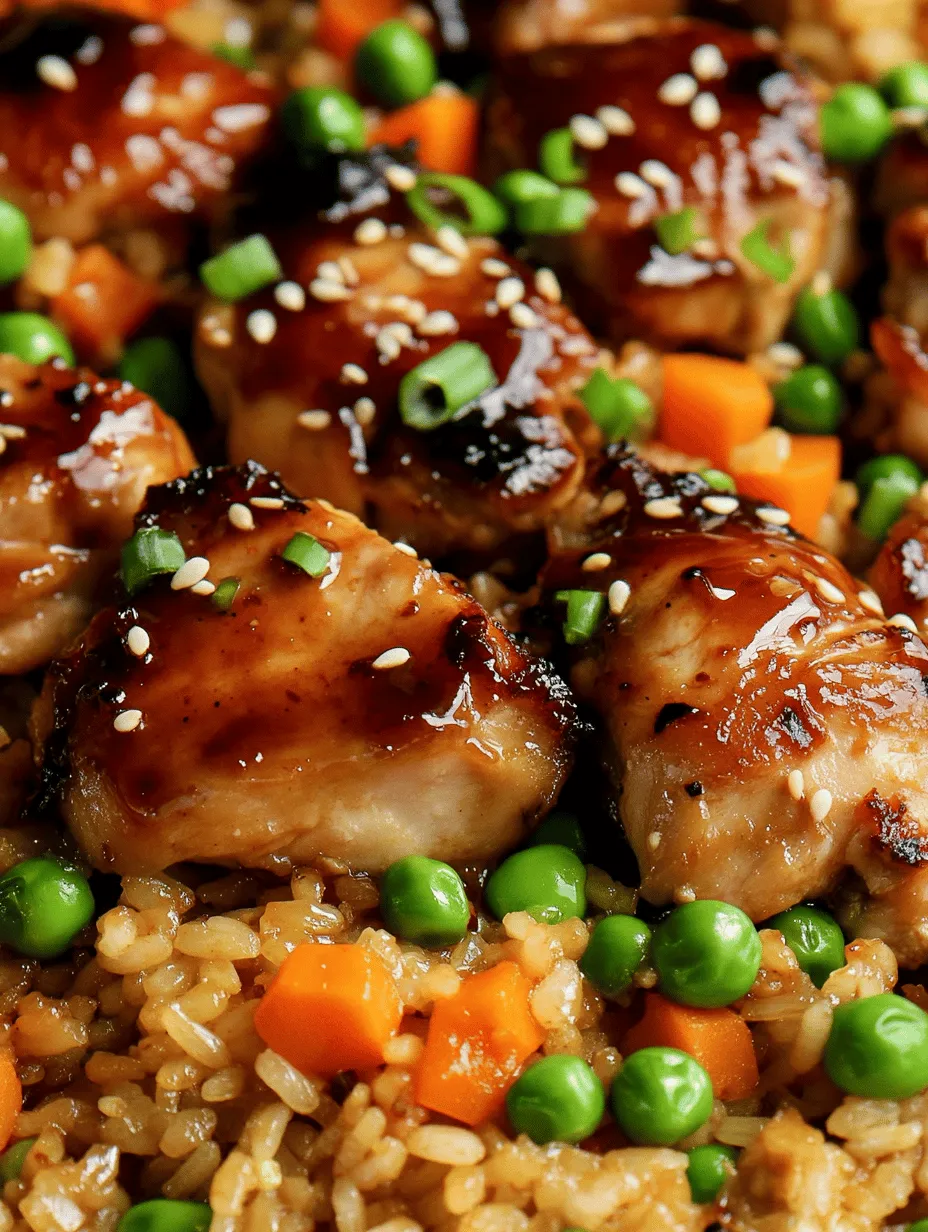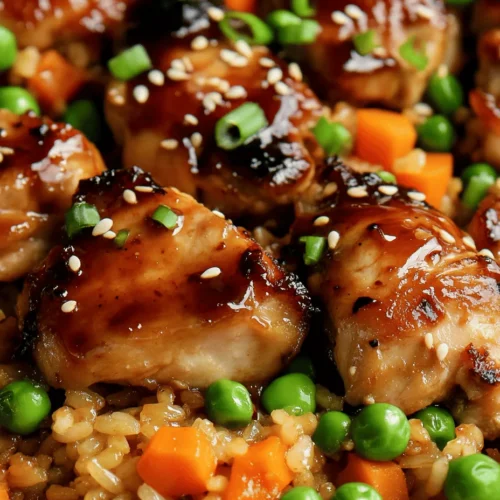Introduction
Japanese cuisine has carved a niche for itself on the global gastronomic stage, renowned for its delicate balance of flavors, meticulous presentation, and emphasis on fresh, high-quality ingredients. From sushi and ramen to tempura and beyond, the art of Japanese cooking embodies a rich cultural heritage that has captivated food enthusiasts worldwide. One dish that stands out for its heartiness, versatility, and irresistible taste is Savory Japanese BBQ Chicken Fried Rice.
This delightful fusion dish marries the comforting elements of traditional fried rice with the bold, sweet flavors of Japanese barbecued chicken, creating a meal that is as satisfying as it is delicious. With each bite, you can experience the umami depth brought forth by soy sauce and teriyaki sauce, complemented by the rich notes of sesame oil. Whether enjoyed as a quick weeknight dinner or a party dish that impresses guests, this fried rice extravaganza is bound to become a favorite.
One crucial tip for achieving the perfect texture and flavor in this dish is to use day-old rice. Freshly cooked rice tends to be too moist, leading to clumping when stir-fried. Day-old rice, on the other hand, has had time to dry out slightly, making it ideal for achieving that coveted fluffy consistency. With this key piece of advice in mind, let’s dive into the essence of this enticing dish.
The Essence of Japanese BBQ Chicken Fried Rice
Savory Japanese BBQ Chicken Fried Rice finds its roots in the culinary practices of Japan, where rice is a staple food and often accompanies a variety of dishes. Rice is not merely a side dish; it serves as a canvas upon which the flavors of various ingredients can shine. Fried rice, in particular, is emblematic of the culture’s ingenuity in transforming leftover ingredients into something extraordinary.
The origins of this dish can be traced back to the traditional Japanese method of cooking rice, which is deeply ingrained in the country’s history. Over time, fried rice has evolved into a beloved comfort food, often incorporating regional flavors and ingredients. The fusion of flavors from soy sauce, teriyaki sauce, and sesame oil creates a harmonious blend that tantalizes the taste buds. Each ingredient contributes to an intricate flavor profile that is both savory and slightly sweet, with a hint of nuttiness from the sesame oil.
This dish is incredibly versatile, making it suitable for any occasion. It can be served as a standalone meal or as a side dish to complement other Japanese favorites like grilled meats or vegetable stir-fries. Its adaptability allows home cooks to experiment with different proteins and vegetables, making it a perfect canvas for culinary creativity.
Ingredients Breakdown
To create the Savory Japanese BBQ Chicken Fried Rice, it’s essential to understand the role each ingredient plays in achieving the dish’s signature flavor and texture. Here’s a detailed description of the key components:
Jasmine Rice
While traditional Japanese fried rice often utilizes short-grain rice varieties, jasmine rice has become a popular choice in many households for its fragrant aroma and slightly sticky texture. The long grains of jasmine rice provide a light and fluffy base that absorbs the flavors of the sauces beautifully. When cooked properly, jasmine rice maintains its integrity, ensuring that each grain remains distinct, which is crucial for a well-executed fried rice dish.
Chicken Thighs
For the protein component of this dish, boneless and skinless chicken thighs are the go-to choice. Thighs are favored over chicken breasts due to their higher fat content, which keeps the meat juicy and tender as it cooks. The rich flavor of chicken thighs pairs well with the sweet and savory sauces used in this recipe, enhancing the overall taste of the fried rice. Additionally, the ease of preparation makes chicken thighs a practical option for weeknight cooking.
Soy Sauce and Teriyaki Sauce
Soy sauce is a fundamental ingredient in Japanese cuisine, providing a robust umami flavor that enhances the taste of almost any dish. In this recipe, it serves as the primary seasoning for the rice, infusing it with depth and complexity. Teriyaki sauce, on the other hand, adds a sweet and tangy element that balances the saltiness of the soy sauce. Together, these two sauces create a flavor harmony that elevates the dish to new heights, making it a standout option for any meal.
Vegetables
The inclusion of vegetables is crucial not only for flavor but also for nutrition. Carrots, peas, and green onions are traditional choices that provide a delightful crunch and vibrant color to the dish. Carrots add a natural sweetness, peas contribute a pop of freshness, and green onions bring a sharp, aromatic note. These vegetables not only enhance the flavor profile but also add essential vitamins and minerals, making the dish more balanced and wholesome.
Eggs
Eggs play a vital role in fried rice, adding protein and a creamy texture that binds the ingredients together. When scrambled and mixed into the rice, eggs provide richness and contribute to the overall mouthfeel of the dish. They also add a beautiful golden hue, making the fried rice visually appealing.
Seasonings
To round out the flavor, a careful balance of salt and pepper is essential. While the soy sauce and teriyaki sauce contribute significant flavor, a touch of salt enhances the other ingredients without overpowering them. A sprinkle of freshly cracked black pepper adds a hint of spice, elevating the dish’s taste profile.
Garnishes
Finally, garnishes like sesame seeds and cilantro are not merely decorative; they serve a purpose in adding freshness and texture. Sesame seeds provide a nutty crunch, while cilantro adds a bright, herbaceous note that cuts through the richness of the fried rice. These finishing touches not only enhance the presentation but also enrich the overall flavor experience.
Preparation Steps
Now that we’ve explored the essential ingredients that contribute to the success of Savory Japanese BBQ Chicken Fried Rice, it’s time to delve into the preparation steps. The process is straightforward, making it an accessible dish for cooks of all skill levels.
1. Prepare the Rice: Start by measuring out your day-old jasmine rice. If you don’t have leftover rice, you can cook fresh rice and allow it to cool completely before using it. Spread the rice out on a baking sheet to help it cool faster and dry out.
2. Marinate the Chicken: In a bowl, combine boneless, skinless chicken thighs with a tablespoon of soy sauce, a tablespoon of teriyaki sauce, and a dash of sesame oil. Allow the chicken to marinate for at least 15-20 minutes. This step infuses the chicken with flavor and ensures that it remains moist during cooking.
3. Prepare the Vegetables: While the chicken marinates, chop your vegetables. Dice the carrots, slice the green onions, and prepare the peas. Having all your ingredients prepped and ready to go will streamline the cooking process and ensure that everything comes together smoothly.
4. Cook the Chicken: Heat a large skillet or wok over medium-high heat. Add a tablespoon of oil (preferably vegetable or canola) and let it heat up. Once the oil is shimmering, add the marinated chicken thighs to the skillet. Cook for about 5-7 minutes, or until the chicken is fully cooked and browned on the outside. Remove the chicken from the skillet and set it aside.
5. Scramble the Eggs: In the same skillet, add a little more oil if necessary, and crack in the eggs. Scramble them until fully cooked. Once done, set the eggs aside with the chicken.
6. Stir-Fry the Vegetables: Add a bit more oil to the skillet, then toss in the diced carrots and peas. Stir-fry for a few minutes until the vegetables are tender but still vibrant in color. Add the sliced green onions towards the end to retain their crispness.
7. Combine All Ingredients: Return the cooked chicken and scrambled eggs to the skillet with the vegetables. Increase the heat to high, and add the day-old rice. Pour in the remaining soy sauce and teriyaki sauce, using a spatula to break apart any clumps of rice. Stir-fry everything together for several minutes, ensuring that the rice is evenly coated and heated through.
These initial steps set the stage for a deliciously satisfying meal that embodies the essence of Japanese barbecue flavors. As we continue with the preparation, we will explore additional tips and finishing touches to elevate the dish to perfection.




